This was published 5 years ago
World's best journeys: Eight thrilling rides in bucket-list destinations
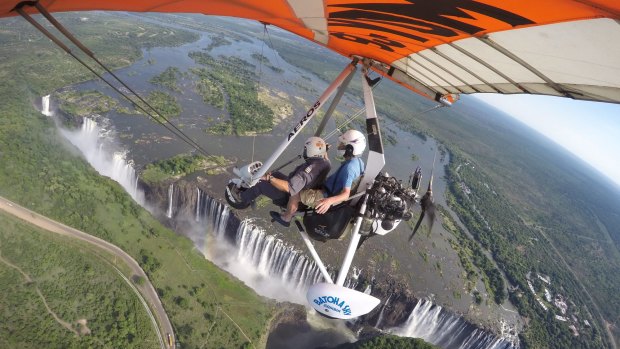
Microlight Plane over Victoria FallsCredit: SHUTTERSTOCK
Sometimes the journey is more important than the destination. For centuries, religions have used pilgrimages as a means of spiritual awakening. Increasingly, modern travellers are also seeking trips that leave them moved, inspired and awed.
Today's traveller has more transport options than ever before. For some people, satisfaction comes from tackling the breath-sapping peaks of the Himalayas on a bike. Others prefer to let the plane, train or zodiac take the strain.
Rail journeys, in particular, have a special romance. Whether it's trundling across the desolate wastelands of Siberia or climbing through the lush, tea-carpeted hills of India, train trips are a reminder of a gentler, less-frantic era of travel.
Cruising offers even more options, from sun-kissed island hops and historic river voyages to crisp-aired polar explorations and sultry jungle excursions.
Of course, sometimes it's the destination that's the drawcard. The thigh-burning trek to Machu Picchu, the heart-racing helicopter flight into the Grand Canyon and the sunrise Serengeti game drive are all about the delicious thrill of anticipation.
We asked Traveller's team of globetrotting writers to sift through the thousands of journeys they've taken over the years and pick the one they'd nominate as the "ride of their life".
Rob McFarland
JORDAN: DESERT CAMEL EXCURSION
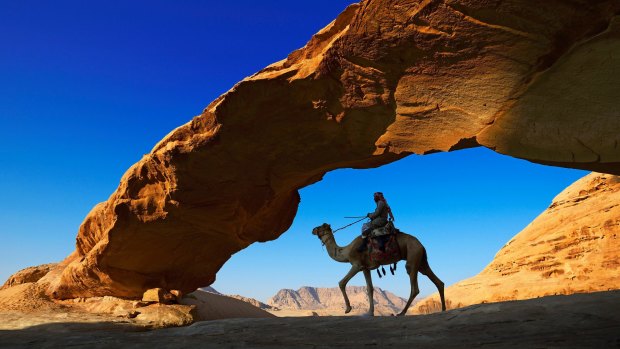
Credit: Alamy
I was in a complete reverie. Sitting astride a camel loping across a vast rose-tinged desert, with towering jagged cliffs on either side, and two Bedouin tribesmen in billowing white gowns ahead of me, the sands of time had trickled back 100 years to a daring World War I campaign.
My leader was the fabled British army intelligence officer T. E. Lawrence and we were there, in Jordan's extraordinary Wadi Rum desert, as emissaries to the Arab Revolt against the unrelenting advance of the mighty Ottoman Empire.
The scene was timeless, limitless and absolutely unchanged from the vast landscape I'd visited so often in innumerable re-runs of the Oscar-winning movie Lawrence of Arabia.
The men ahead of me picked up the pace, and I pushed my camel to match theirs. A frisson of fear ran through my body. The enemy must be lurking here somewhere, behind a rocky jebel, over the next hill, hidden between the constantly shifting sand dunes.
Then Lawrence suddenly pulled up and waited until I was alongside him. A special message? A mission? A fresh warning?
"How are you doing?" he asked me cheerily. "Ready for some afternoon tea?"
Traversing Wadi Rum in the company of dagger-carrying Bedouins was, for me, an entree into a wondrous world of the past – and of fevered imagination – yet still with all the comforts of 21st-century tourism.
Unlike Lawrence's troops, we didn't have to coax our camels to kneel on the ground and then create a make-shift tent with our robes to sleep with it. Instead, we heartlessly abandoned our animals at the end of each day for soft mattresses and crisp sheets inside otherwise authentic Bedouin tents, with a toilet and sink a mere 50 metres away.
We didn't have to scrounge what food we could; we ate from shared plates in a communal tent where the locals sang and danced. We weren't completely cut off from civilisation, either, as the desert these days has great mobile reception and Jeeps that can be summoned whenever needed.
And perhaps most importantly of all, we didn't run any risk of anyone shooting us.
"This is the magical place of our ancestors," my Lawrence figure and guide Obied Naser Al-Amamreh told me, with a smile. "It is good that you've been touched by that magic, too."
I certainly was. And every so often, I just can't help reliving, in my dreams, that ride of my life.
Sue Williams
See also: While conflict rages around it, one Middle East country's tourism is booming
ZAMBIA: MICROFLIGHT OVER VICTORIA FALLS
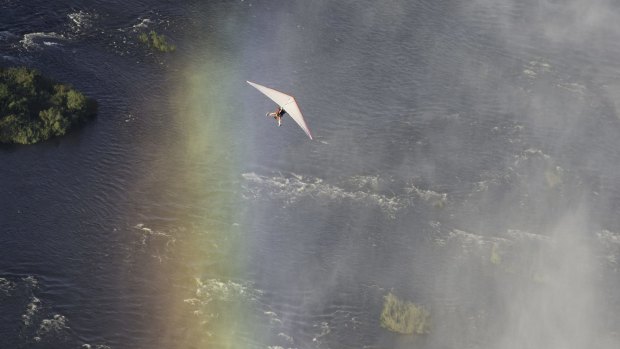
Credit: Dana Allen
"Are you ready?" asks Heiko over the headset. "Not really," I reply, nervously. I'm strapped into a cross between a hang glider and a hairdryer – a skeletal contraption fashioned from steel tubing, metal cables and a canvas wing. Powered by an exposed four-stroke engine, the whole arrangement is alarmingly alfresco.
Reassuringly, I have a strapping young German wedged between my thighs and Heiko assures me he's done this hundreds of times. He checks again that I don't have anything loose on my person.
"If something came free and flew into the rotor," he says, pausing for effect, "it would cause a big problem."
Soon, we're bumping down Maramba Aerodrome's makeshift grass runway, the 80-horsepower engine screaming behind my head. Seconds later we're airborne, soaring over the Zambezi River, headed towards one of the world's Seven Natural Wonders.
Victoria Falls isn't the planet's highest or widest waterfall but it's arguably the most spectacular. During peak flow, more than 500 million cubic metres of water rush over a 1708-metre basalt ledge every minute and then crash into the 108-metre chasm below. Known as Mosi-oa-Tunya (the Smoke that Thunders), the falls' towering plume of spray can be seen from 50 kilometres away.
Unlike in a plane or helicopter where you're cocooned from your surroundings, there is nothing between me and one of Africa's greatest natural spectacles. Not only can I see and hear the thundering torrent of water, I can feel and taste it.
From this unique aerial viewpoint, I can trace how the falls have retreated over millions of years, creating a dramatic, zig-zagging gash through the basalt plateau.
All too soon, it's time to head back. En route, we see antelopes grazing in acacia-studded plains and hippos wallowing in the Zambezi's shallows. Heiko even lets me steer, a delicate process of moving the microlight's wing left and right. Despite only lasting 15 minutes, the flight is the highlight of my trip.
Of course, there are many other ways to experience the falls. You can take a spray-drenched walk across Knife Edge Bridge, raft the Zambezi's furious class 5 rapids and even wallow a metre from the edge in the nerve-testing Devil's Pool. But for me, this option feels the most apt. For when Scottish explorer David Livingstone first saw this extraordinary spectacle in 1855, he famously wrote: "Scenes so lovely must have been gazed upon by angels in their flight."
Rob McFarland
See also: The most wonderful sight you'll see in Africa
ITALY: LAKE COMO FERRY RIDE
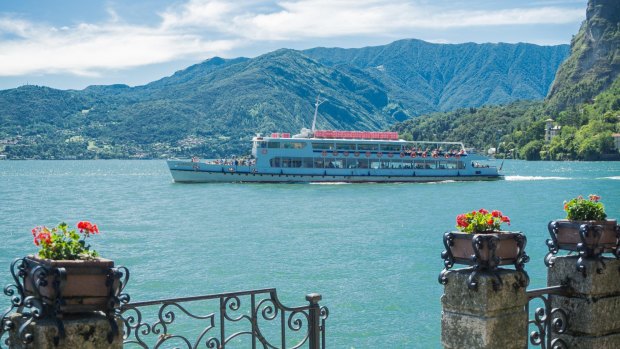
Credit: Alamy
Don't ask what I was thinking. Everyone knows a trip to Lake Como is about indulgence. It is about mornings by the pool followed by long lunches; private speedboat trips and swanning about in an elegant jumpsuit while keeping one eye peeled for George Clooney.
I, however, wanted to be less predictable. I convinced a friend that instead of a strappy-sandal getaway, we should pack our walking shoes and spend our time at Lake Como hiking through the hinterland. After all, living in Sydney, I get plenty of waterfront action at home. Aren't holidays supposed to be about doing things differently?
I'm pleased to report we enjoyed our first few days immensely. Each morning we'd choose a different route and then stride out, sometimes following ancient stone roads through medieval villages, other times walking shady paths through leafy forests.
Then we decided to explore further afield. We rode the bus an hour or two out of town, disembarked in a remote village, slipped on our backpacks and headed off confidently in the direction of home.
Three hours later, it was clear we had miscalculated. The sun was beating down on us, our water bottles were empty and our feet were aching. At the next town, we headed straight for a gelateria conveniently positioned near the lakeshore, then sank happily onto the nearest bench clutching our sweet treats.
Refreshed and sugared-up, we were finally focus on our surroundings. That is when we noticed the ferry stop – and, even more thrillingly, a ferry heading across the lake towards us. We almost ran to the ticket office, beaming at the thought that we were now just minutes from home.
Only we weren't. Our small ferry took the (very) long way back, tacking from one shore of the lake to another and stopping at every small settlement along the way. It took us almost two hours to get back to our starting point; we could have walked it faster, but every second of the journey was a delight.
As our ferry made its way across the sparkling lake, each scenic vista was followed by another even more eye-catching. The water provided the perfect vantage point for admiring ancient villas and elegant hotels, Roman bridges and elaborately landscaped gardens, weathered clock towers and George Clooney's villa. It was spectacular.
Next day, the walking shoes stayed in the cupboard. We had seen the light. We slipped on our strappy sandals, ordered up a private speedboat, and took ourselves out for a nice long lunch.
Ute Junker
See also: A lake so beautiful it's supernatural
INDIA: MANALI TO LEH BY BIKE
There's more air in my bike tyres than there is in my lungs as I grind up the slopes of the Himalayas. Ahead of me, hours in the distance, is Taglang La, a road pass that's claimed as the second highest in the world. I'm breathing deeper than I may ever have breathed in my life, but at 5360 metres above sea level, oxygen still comes only in dribbles.
I've been cycling for eight days through the Indian Himalayas, crossing from the monsoon-washed foothills of Manali towards the desert heights of Leh. Four high passes are behind me, as are flooded rivers, mud-covered roads and some of the planet's most inhospitable and yet beautiful mountain country. Only Taglang La remains as a barrier to the Indus Valley, where Leh awaits like some sort of Oz.
It's midsummer – about the only time you can cycle this 500-kilometre highway that's closed by snow and ice for up to nine months each year – and a storm is boiling over the pass, but I ride happy in the memory of waking this morning on the shores of a saltpan lake with yaks grazing around me.
By the time I reach Taglang La, I'll have climbed the equivalent of Mount Everest – more than 8000 metres of ascent – since pedalling out of Manali. I'm feeling strong, but Taglang La has a reputation as the roughest and steepest of the road's passes. Its reputation exceeds even that of Rohtang La, a pass I crossed days ago with a name that's said to translate as "piles of corpses", where I'd spent hours overtaking motor vehicles stranded in deep mud.
I settle into a slow rhythm, my legs seeming to turn at about the speed of a clock's minute hand. Trucks as bright as peacocks clatter past, and light snow is falling as I finally rise onto the pass.
Nothing grows in this bleak environment, not even a blade of grass, but the pass is smothered in a forest of prayer flags that look as tattered and battered as I feel, their prayers speeding to the heavens on the fierce winds.
There are celebrations, even tears, as other cyclists rise up the mountain around me, and a yellow road marker declares, "You are passing through the second highest pass of the world. Unbelievable is not it?".
I stare down into two valleys as deep as pits, with my bike straddling the tallest mountain range on earth. Unbelievable is not it, indeed.
Andrew Bain
See also: The world's nine most epic cycling routes
INDIA: TOY TRAIN TO GHUM
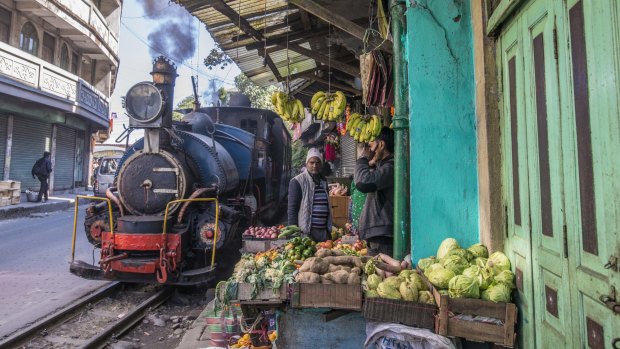
Credit: Shutterstock
Toot-toot! Huff-huff! I'm on a whistling, chuffing journey just inches away from open-fronted shops, fluttering Tibetan prayer flags and black-faced langurs. As the train passes West Point, a pair of Tibetan monks stand on the roof of their temple blowing alpenhorns. In the background, tea plantations slide down from the ridge in cornrows until they dissolve in mist.
I'm aboard the Darjeeling Himalayan Railway, the Toy Train, one of the engineering marvels of the British Raj. In service since 1881, painted a Thomas-the-Tank-Engine shade of blue, the train makes an 88-kilometre journey from close to sea level to the hill station of Darjeeling at over 2000 metres, a miracle it achieves via zig-zag reverses and loops. Steam buffs come from all over the world just to ride the UNESCO World Heritage listed train. I'm doing the tourist version, a 45-minute, six-kilometre trip from Darjeeling to Ghum, the highest railway station in India at 2225 metres.
As we round the Batasia Loop, where the train does a 360-degree spiral, I poke my head out the carriage window for some shots. Smoke belches from the engine, the noise is tremendous. Black cinders rain around me.
Back in my seat, there's a smell that seems pungent even by the standard of the lively odours the subcontinent brings to the nasal passages. A warming sensation spreads across my scalp. I reach up to feel what's happening. "My hair's on fire," I remark in what I hope is a nonchalant tone.
A fistful of hair comes away in my hand and smoulders on the floor at my feet, fused together in a black clump. There's a crater in the middle of my hair with a cinder cone of frizzy nodules. A sudden hush descends on the carriage, since a burning man is unusual even for India.
"I am hoping there will not be conflagration," says my neighbour, looking down at the smoking knot on the floor.
The rest of the carriage is subdued for the remainder of the journey, although I get a number of awed looks from the children on board.
At Ghum I wander to the front of the train for a look at the engine. The fireman is stoking the boiler, heaving coal into the firebox. My reputation has preceded me. "Not too close, gentleman," he says, waving me away from the blazing inferno. "We are not wanting a funeral fire for you." And from the way he and his fellow drivers laugh, they think it's an excellent joke.
Michael Gebicki
See also: The world's greatest train journeys
CHILE: GLACIER CRUISE
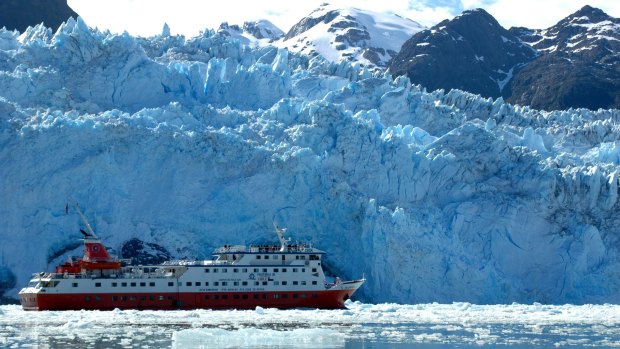
Credit: Shutterstock
We're sitting in a small excursion craft off the coast of southern Chile, wrapped in orange lifejackets, when – without warning – our pilot rams the boat into a small iceberg.
It's a surprise, but not as unexpected as what happens next. A crew member pulls out an ice-pick, bashes away at the berg, and extracts a large chunk of ice. A bottle of Ballantine's is produced and within moments we passengers are milling around on deck, clinking glasses as we toast each other – with 12-year-old whisky containing 50,000-year-old ice.
"Salud, dinero y amor!" says our host, raising his glass. "To health, wealth and love!" We return the toast, both startled and energised by the spectacular stunt.
This unconventional drinks session is the highlight of a memorable cruise. It started at Puerto Natales in Chile's Magallanes region, part of Patagonia. Here our cruise ship, the Skorpios III, set sail on the Kaweskar Route past green hills that gradually gave way to rocky slopes, with massive snow-topped mountains beyond.
In this part of the country the roads vanish, the human population dwindles and the terrain breaks up into a rugged jumble of islands, mountains and glaciers.
As we progress north, chunks of ice float past us, harbingers of what's ahead. Then on the second morning we awake to find the Pio XI Glacier outside our window. Also known as the Bruggen Glacier, it's the largest in South America, stretching more than 60 kilometres back from the sea.
Filling our field of vision is a complex cliff of ice, ranging in shade from white through blue to indigo. Great vertical cracks seem like caves, promontories resemble monoliths. Immense fissures signal where the next giant chunk of ice will fall into the sea as the glacier grinds its way down from the heights.
Awe-struck, we stand on deck as the Skorpios cruises parallel to the wall of ancient ice. Every so often a piece breaks away and hits the water, with a deep crash and reverberating waves.
Standing reverently, quieted by the majesty of the scene, we all feel we've experienced a major highpoint of our travelling careers.
"Just look at it," says one fellow traveller. "Forget about photos. Look at it and carry it in your mind." So we put down our phones and cameras for a moment, and just look.
See skorpios.cl
Tim Richards
See also: This could be the end of the world
AFRICA: LUXURY AIR SAFARI
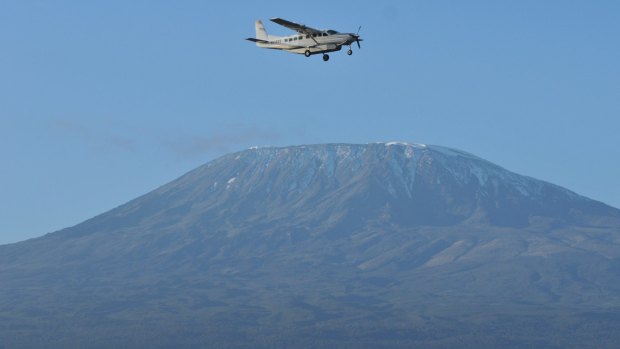
Credit: Scenic Air Safaris
I had travelled by small plane in Africa before, but never like this. Never with reclining and rotating caramel leather seats; never with a fridge filled with chilled drinks and snacks; never with the pilot blasting Toto's Africa into my personal headset.
This was the flight that spoiled me forever, whisking me from Kenya's Masai Mara to Nairobi on an eight-seater Executive Cessna Grand Caravan aircraft, privately chartered by my tour operator, Bench Africa. It wasn't just the luxury that ruined me – although I certainly could get used to being whizzed around by private plane, avoiding long road transfers, detours and airport hassles. It was also the ability, thanks to the aforementioned swanky swivel seats, to get the best possible aerial views – and snaps – of the extraordinary landscape below.
Mara means "spotted" in the Masai language and from my position, with the seat pivoted to face the window, I could appreciate why. Stretching out below was a patchwork quilt of russet and green land, embroidered with fawn-coloured tentacles of bush tracks, and dotted with the occasional steely bumps of grazing elephants. We had spent the past three days bouncing through that landscape in safari trucks, but I hadn't properly appreciated its unfathomable vastness, its dazzling nothingness, until I got airborne.
Soon, the Savannah began, emerald-hued due to recent rains and spotted with bomas, or livestock pens, filled with cattle.
"The Masai value their cattle more than their wives," quipped our handsome Kenyan pilot who, thanks to his deep connection to the land beneath us, turned our one-hour flight into something like a David Attenborough Planet Earth episode. He told us about how Kenya's surging population (estimated by the UN to have almost doubled by 2050) has led to a greater division of land with more fences, which we spotted from above, and about the geological history of the Great Rift Valley, reaching out beneath us for thousands of kilometres.
Much of the time, however, we were left to ourselves. To twirl around in our seats like giggling school kids, and to listen to our pilot's impeccably curated soundtrack. When he played another song titled Africa with the chorus, "anywhere you go, London, USA, nowhere be like Africa, nowhere be like home", I even got a little teary.
Before long, the savannah began to melt into the city of Nairobi, the increasingly dense smattering of houses swallowing the green until only small patches of it were visible. Our flight was over, and regular safaris would never feel quite the same again.
See benchafrica.com
Nina Karnikowski
See also: World's 10 most spectacular animal migrations
US: HELICOPTER TO THE GRAND CANYON
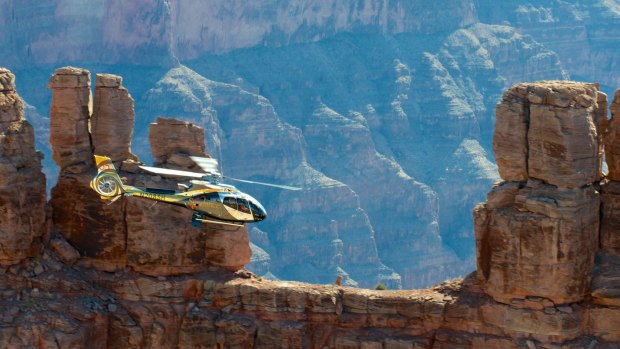
The red escarpment seems close enough to touch; we hover momentarily, then rise like slurped spaghetti, before shooting out horizontally along the jagged ridge.
Glancing back, I notice some of my fellow passengers blanch at the unexpected motion; our pilot Raphael also notes their discomfort, steadying the chopper as he finds a sweet place above the turbulence.
Like his biblical namesake, Raphael is an angel, forever on guard for his passengers' wellbeing, and calm under pressure. It doesn't hurt that he's tall and ridiculously handsome, with a lilting Brazilian accent; we all later admit to a little crush, even the straight male in our party.
Today's journey is testing Raph's flying skills, however; despite the sunshine, desert thermals toss us like a discarded wrapper, challenging the very notion of the miracle of flight. Prone to motion sickness, I fear for my buffet breakfast; instead, I find myself relishing the roller coaster, confident in the protective glow of Raphael's aura.
If I had to recommend one sight-seeing helicopter trip in a lifetime, this would be it – a three-hour adventure with Sundance Helicopters from the neon-jungle of Las Vegas to the Grand Canyon, landing on an isolated bluff to enjoy a champagne picnic and celebrate one of the seven natural wonders of the world.
Cut by the Colorado River, the 1.6 kilometre-deep, 445-kilometre-long Grand Canyon is best appreciated from above, its imposing scale and striated purple and russet palette testament to the creative forces of nature.
By contrast, Las Vegas appears as an anomaly in the dusty desert, a concrete blight that sparkles into neon glory as night falls. Granted, it's not the most attractive by day; but with its bizarre architecture and dense infrastructure, it serves as a curious vision of humankind's efforts to exploit nature.
Taking off from the Sundance heliport to the accompaniment of Sheryl Crow's Leaving Las Vegas, Raphael steers us above the treeless tapestry of the Mojave Desert to the teal expanse of Lake Mead – the largest reservoir in the US, created in 1931 with the construction of Hoover Dam. We then follow the snaking, green Colorado River to the West Rim of the Grand Canyon, nearly half a million hectares of Haulapai Indian ancestral land.
Thanks to a long-standing agreement between the Haulapai and Sundance, we then descend 1000 metres below the rim to land on the reservation, with exclusive use of a dramatic overlook with 180-degree views of the red walls and river.
Mimosas in hand, we make a toast to a thrilling adventure and an unforgettable, sacred wilderness where angels soar.
Julie Miller
See also: Ten of the world's unsung hotspots
See also: Nine of the world's best neighbourhoods with a bad reputation
Sign up for the Traveller Deals newsletter
Get exclusive travel deals delivered straight to your inbox. Sign up now.